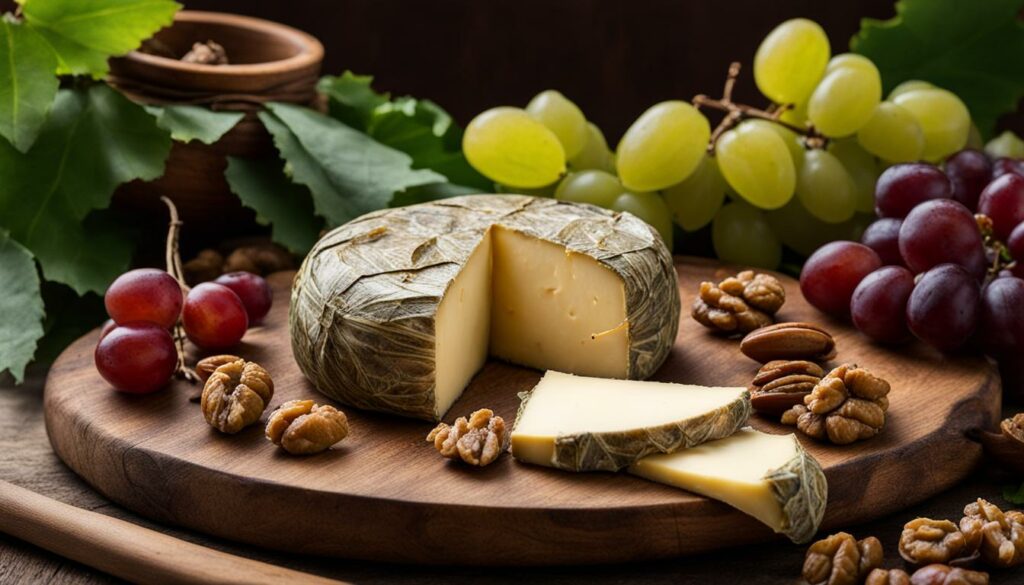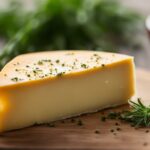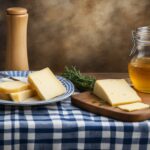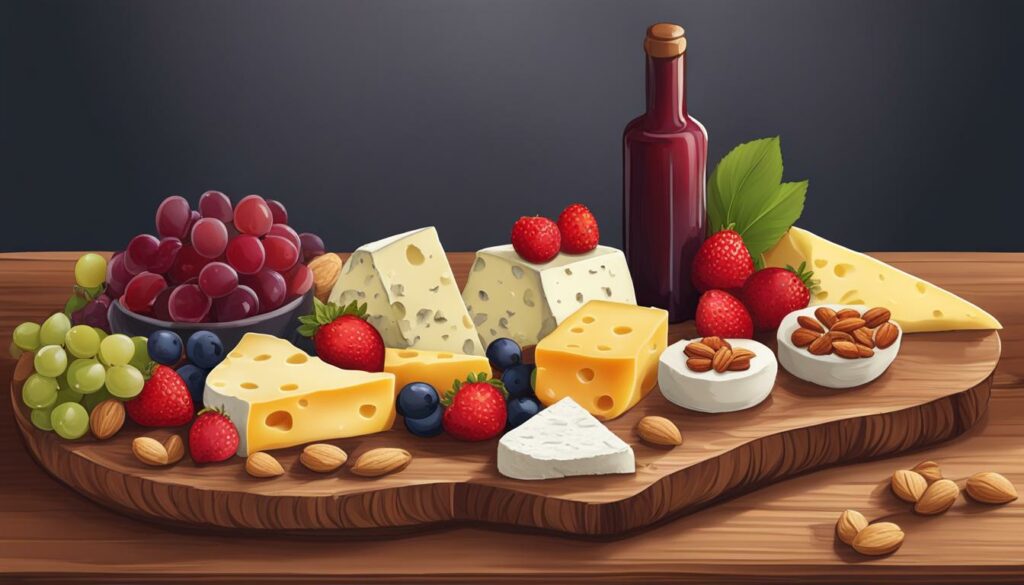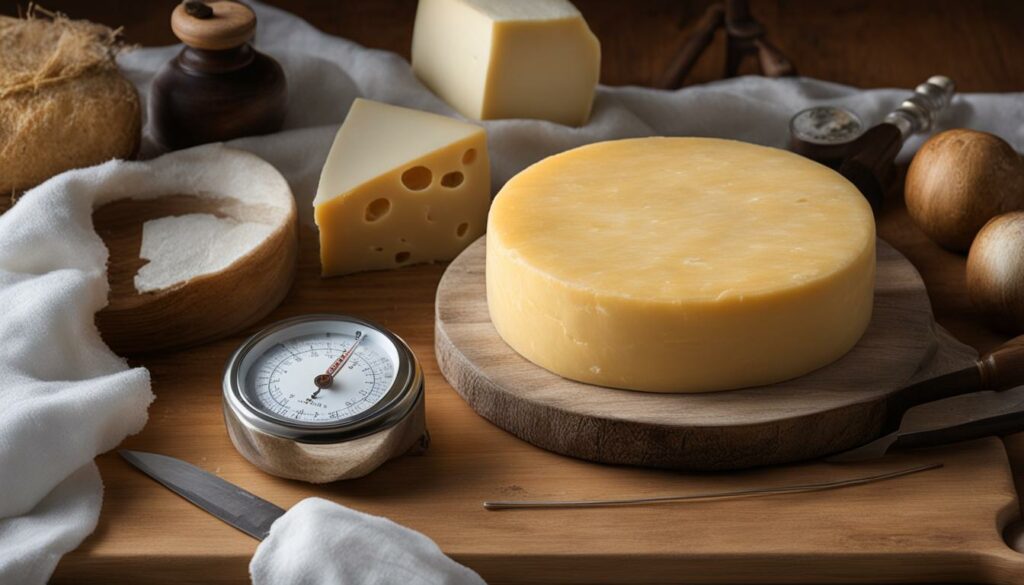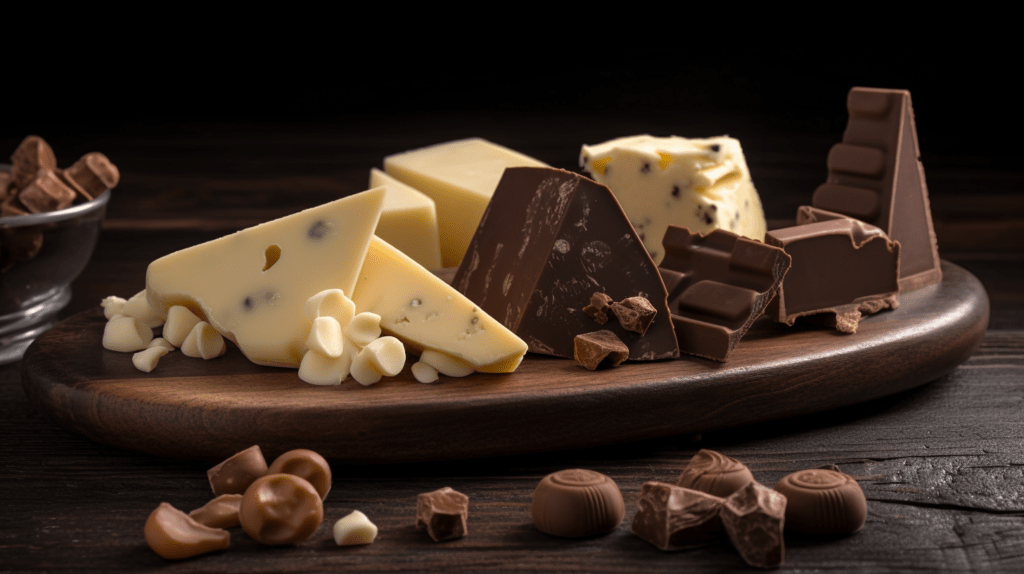Welcome to the enticing world of Banon Cheese, a delightful French delicacy that will transport your taste buds to the picturesque village of Banon in Haute Provence. Made from organic, high-quality, raw goat’s milk, this traditional, artisanal cheese is famous for its unmatched flavor and authenticity.
Indulge in the distinct taste of Banon Cheese, wrapped in chestnut leaves for an extra touch of nature’s goodness. As you unwrap this renowned cheese, be prepared to experience a symphony of flavors that only the French can create.
Known for its rich history and traditional production methods, Banon Cheese is a true labor of love. The dairy farms and artisanal dairies in the region carefully craft this cheese using time-honored techniques that have been passed down through generations. With every bite, you can taste the dedication and craftsmanship that goes into making each wheel of Banon Cheese.
Immerse yourself in the delicate sweetness and subtle earthy notes of Banon Cheese, accented by the woody and fruity undertones from the chestnut leaves. Each bite yields a creamy and smooth texture that melts in your mouth, leaving you craving for more.
Whether enjoyed on its own or paired with fruits, nuts, bread, or even dark chocolate, Banon Cheese promises to elevate your culinary experience. Its versatility knows no bounds, making it a captivating addition to any cheese board or gastronomic creation.
So, embark on a flavorful journey and savor the renowned Banon Cheese. Immerse yourself in the authentic taste of France right at your fingertips. Explore the options to purchase this exquisite cheese to experience the true flavor of traditional, artisanal Banon Cheese.
The History and Production of Banon Cheese
Banon cheese has a rich history and is deeply rooted in the traditions of Provence. It is made using traditional production methods that have been passed down through generations. The cheese is produced by around 15 farms and two artisanal dairies in the region, with a total annual production of about 80 metric tonnes. The milk used in the production of Banon cheese comes from local goat breeds such as Commune Provençale, Rove, and Alpine.
The production process of Banon cheese involves meticulous attention to detail and craftsmanship. After the milk is collected, it is curdled using rennet and allowed to ferment for several hours. The resulting curd, called “caillé doux,” is carefully drained and shaped into small rounds. These rounds are then left to mature in a humid environment for about six weeks.
During the maturation process, the cheese develops its distinctive flavor and creamy texture. It acquires a luscious, smooth consistency with a rich, earthy taste that cheese connoisseurs love. Once the desired ripeness is achieved, Banon cheese is wrapped in chestnut leaves and tied with raffia to create its signature appearance.
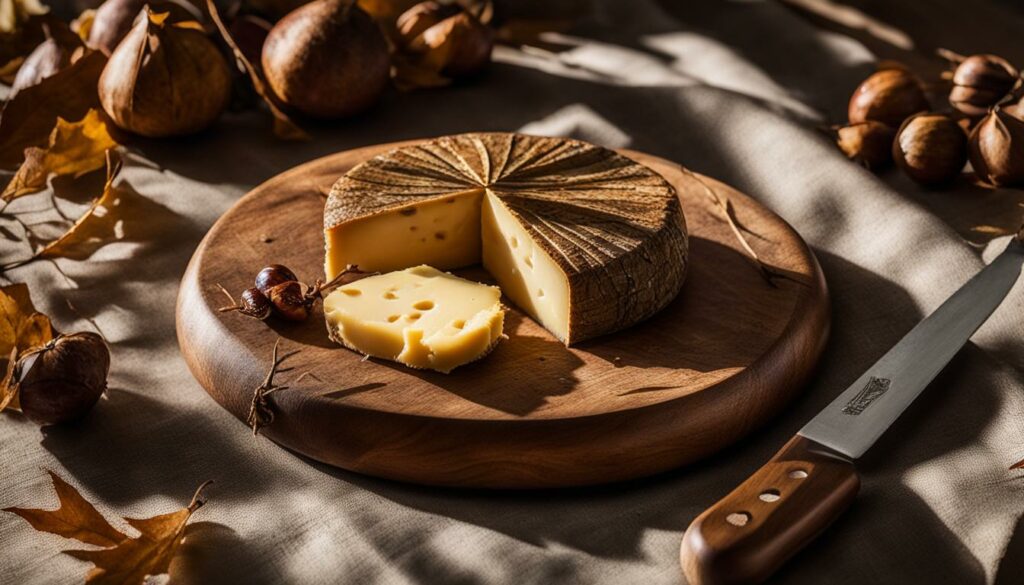
The chestnut leaves not only add to the visual appeal of Banon cheese but also contribute to its flavor. They infuse the cheese with a delicate woody aroma and a subtle fruity note. As the cheese ages, the flavors become more pronounced, resulting in a complex and satisfying taste.
Banon cheese is a true reflection of the dedication and expertise of the producers in the region. Their commitment to preserving traditional methods and sourcing high-quality ingredients ensures the authenticity and exceptional quality of this renowned French delicacy.
The Flavor Profile of Banon Cheese
Banon cheese is renowned for its unique and captivating flavor profile. This French delicacy offers a delightful combination of delicate sweetness, earthy undertones, and a creamy texture that melts in your mouth.
When you take a bite of authentic Banon cheese, you’ll immediately notice its delicate sweetness. This subtle sweetness is complemented by hints of goat’s milk, adding a distinct tanginess to the overall flavor. The caillé doux, the type of curd used in the cheese’s production, contributes to the deep and earthy taste that Banon cheese is known for.
Another factor that makes Banon cheese truly special is the chestnut leaves in which it is wrapped. These leaves impart a woody and fruity undertone to the cheese, elevating its flavor to new heights. The use of chestnut leaves is a traditional practice that adds an extra layer of complexity and uniqueness to Banon cheese.
As Banon cheese ages, its flavor intensifies and develops further complexity. The cheese becomes nuttier and more robust, satisfying the palates of cheese enthusiasts seeking a full-bodied taste experience.
The texture of Banon cheese is equally remarkable. It has a smooth and creamy consistency that effortlessly melts in your mouth, delivering a truly indulgent experience with every bite.
Experience the exceptional flavor and texture of Banon cheese, and discover why it is held in such high regard by cheese connoisseurs around the world.
Serving and Pairing Banon Cheese
Banon cheese is a versatile cheese that can be enjoyed in various ways. Here are some serving suggestions and pairing recommendations to enhance your Banon cheese experience:
Serving Suggestions
- On a cheese board with a selection of fruits such as figs, apples, and pears
- Accompanied by nuts like almonds and walnuts for added crunch
- Served with a variety of bread, including fresh baguette and crusty sourdough
- Enjoyed with cured meats such as prosciutto and salami for a savory combination
- Paired with dark chocolate for a decadent and indulgent treat
- Savored alongside fruit tarts to balance the creamy and fruity flavors
Pairing Recommendations
To elevate the flavors of Banon cheese, consider these pairing options:
- For a classic pairing, enjoy Banon cheese with a fruity red or white wine.
- For a touch of Provence, indulge in Banon cheese with a refreshing Provençal rosé.
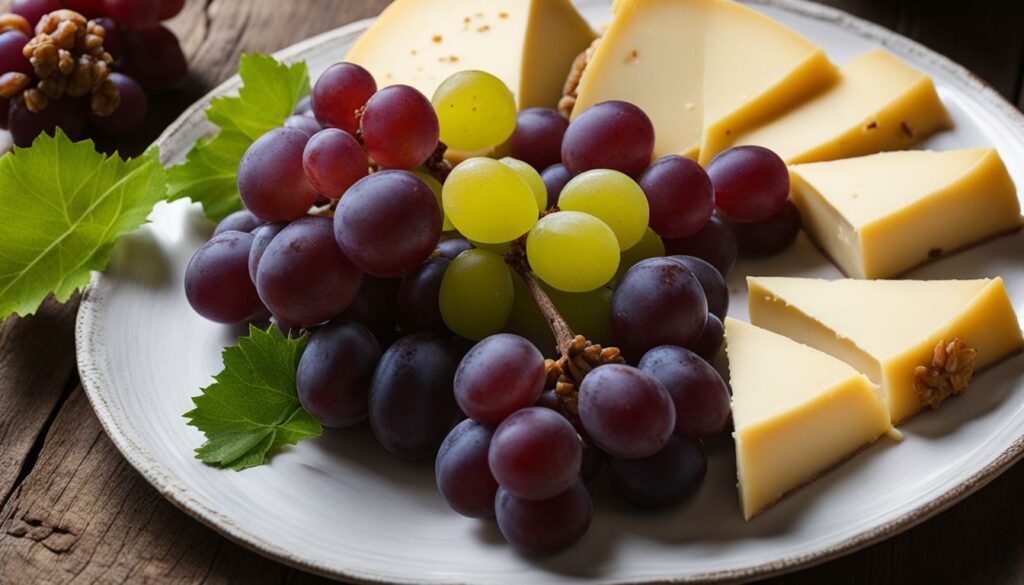
The versatility of Banon cheese allows you to create your own personalized tasting experience. Whether you prefer a sweet or savory combination, there are endless possibilities to explore and enjoy.
The Significance of the Chestnut Leaf Wrap
One of the distinguishing features of Banon Cheese is its chestnut leaf wrap. The cheese is carefully wrapped in chestnut leaves, which have been soaked in white wine and dipped in eau-de-vie, a clear fruit brandy. The use of chestnut leaves not only adds to the visual appeal of the cheese but also enhances its flavor. The leaves impart a slightly tannic taste to the cheese, adding a subtle bitterness that complements the creamy and sweet flavors. This traditional wrapping technique has been used for centuries and is an integral part of the production process of Banon Cheese, ensuring its authenticity and unique taste.
The Chestnut Leaf Wrap Process
- The chestnut leaves are carefully selected, ensuring they are fresh and free from any blemishes.
- The leaves are then dipped in white wine, infusing them with a delicate flavor that will later be imparted to the cheese.
- After being soaked in wine, the leaves are briefly dipped in eau-de-vie, a fruit brandy that further enhances the cheese’s taste.
- The cheese, made from raw goat’s milk, is carefully wrapped in the chestnut leaves, ensuring it is completely covered.
- The wrapped cheese is tied with raffia, a natural fiber, to hold the leaves in place during the aging process.
- The wrapped cheeses are then aged for several weeks, allowing the flavors to develop and the cheese to mature.
This traditional wrapping process not only contributes to the distinctive appearance of Banon Cheese but also plays a role in its flavor development. The chestnut leaves create a microclimate around the cheese, allowing it to age and develop its unique characteristics. The leaves also help preserve the cheese, acting as a natural barrier against unwanted bacteria and maintaining its freshness.
“The wrapping of Banon Cheese in chestnut leaves is not just for aesthetics. It is an essential step that contributes to the cheese’s flavor and ensures its authenticity.”
| Benefits of the Chestnut Leaf Wrap | Flavor Components |
|---|---|
| Preserves the cheese, maintaining its freshness | Creamy |
| Creates a unique and visually appealing presentation | Slightly tangy |
| Enhances the cheese’s flavor with notes of white wine and fruit brandy | Subtle bitterness |
| Provides a natural barrier against unwanted bacteria during the aging process | Sweet, earthy |
Overall, the chestnut leaf wrap is not only a beautiful adornment for Banon Cheese but an essential element that contributes to its unique taste. The combination of the creamy, tangy, and slightly bitter flavors, along with the sweet and earthy undertones, makes Banon Cheese a true delicacy. The preservation of this traditional wrapping technique ensures that every bite of Banon Cheese is an authentic and exceptional experience.

Where to Buy Banon Cheese
If you’re eager to savor the exquisite flavors of Banon Cheese, there are several options for purchasing this culinary gem. Whether you prefer the convenience of online shopping or the unique experience of visiting local markets, you can find high-quality and authentic French Banon Cheese at the following sources:
1. Online Retailers
Specialty online retailers that specialize in artisanal and gourmet cheeses offer a wide selection of Banon Cheese sourced directly from reputable producers in France. These online platforms provide a convenient way to explore different varieties and satisfy your craving for the unique flavors of French Banon Cheese.
2. Specialty Cheese Shops
Visit your local specialty cheese shops to discover an assortment of Banon Cheese options. These dedicated establishments often curate a selection of high-quality and authentic French cheeses, including Banon Cheese. The knowledgeable staff can provide guidance and recommendations based on your preferences.
3. Gourmet Food Stores
Gourmet food stores are another excellent source for purchasing Banon Cheese. These stores cater to culinary enthusiasts and offer a range of specialty products, including authentic French Banon Cheese. Explore the aisles and indulge in the rich flavors of this exceptional cheese.
4. Farmers’ Markets and Cheese Festivals
For a unique and immersive experience, consider visiting local farmers’ markets or cheese festivals. These events often showcase small-scale producers who offer their own versions of Banon Cheese. Connect directly with the producers, learn about their craft, and savor the distinctive flavors of Banon Cheese created by passionate artisans.
When purchasing Banon Cheese, whether online or in person, ensure that you seek out authentic French Banon Cheese to fully appreciate its rich history and exquisite taste.
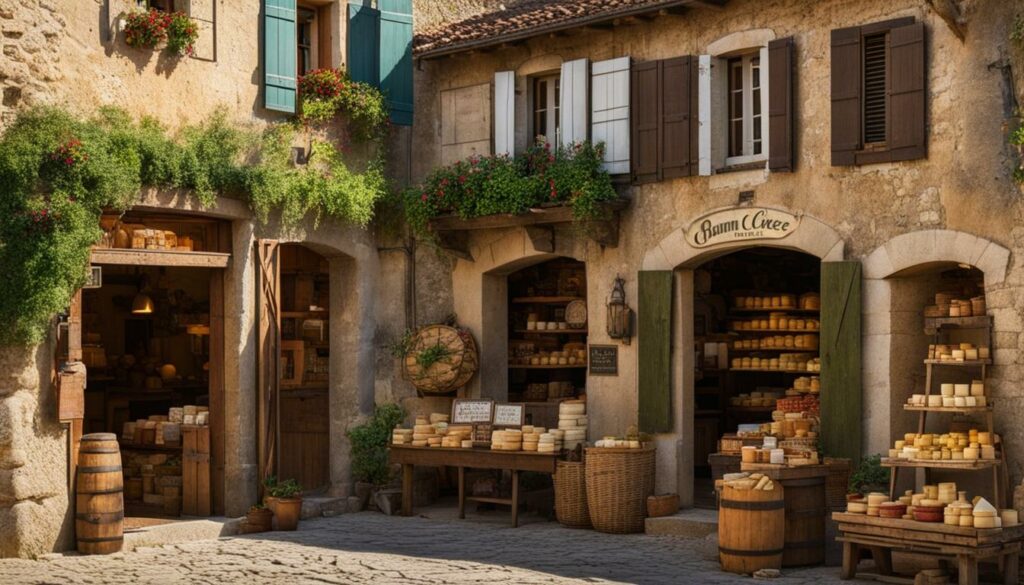
| Retailer | Availability | Specialty | Price Range |
|---|---|---|---|
| Online Retailer A | Ships nationwide | Artisanal and gourmet cheeses | $$$ |
| Online Retailer B | International shipping | Wide variety of French cheeses | $$$ |
| Specialty Cheese Shop | Local availability | Specializes in fine cheeses | $$ |
| Gourmet Food Store | Local availability | Caters to culinary enthusiasts | $$ |
| Farmers’ Market | Seasonal availability | Small-scale producers | $ |
| Cheese Festival | Occasional availability | Focus on artisanal cheeses | Varies |
The Future of Banon Cheese
Despite its rich history and cultural significance, Banon cheese remains a relatively niche product with limited production. However, the cheese has been gaining recognition and appreciation from cheese lovers worldwide. The protected designation of origin (PDO) status awarded to Banon cheese in 2003 has helped to preserve its traditional production methods and ensure its quality. While the production of Banon cheese is still limited to a small number of farms and dairies, there is optimism for its future as more people discover and fall in love with the unique flavors and characteristics of this exceptional cheese.
Conclusion
Banon cheese is a true culinary gem that showcases the craftsmanship and passion of its producers in Haute Provence, France. Its distinctive flavor, creamy texture, and unique chestnut leaf wrapping make it a cheese worth savoring. Whether enjoyed on its own, paired with complementary ingredients, or used in recipes, Banon cheese offers a one-of-a-kind taste experience. Its rich history, preserved traditions, and recognized quality make Banon cheese a symbol of authentic French cheese-making.
Delight in the flavors of Banon cheese and discover why it has captivated the hearts and palates of cheese enthusiasts worldwide. Known for its high-quality and artisanal production, Banon cheese is famous for its organic and authentic French origins. The traditional methods used to craft this cheese ensure its exceptional taste and quality, making it a must-try for cheese lovers.
Indulge in the authentic taste of Banon cheese and experience the flavors that have been cherished for centuries. Whether you’re enjoying it as part of a cheese board, pairing it with fruits and nuts, or exploring its versatility in culinary creations, Banon cheese promises to deliver a truly unforgettable experience. Treat yourself to the best of French cheese with Banon cheese, a true delight for your taste buds.
FAQ
What is Banon cheese?
Banon cheese is a French delicacy that originates from the village of Banon in Haute Provence, France. It is an artisanal cheese made from raw goat’s milk and is known for its unique flavor profile and traditional production methods.
How is Banon cheese made?
Banon cheese is made using traditional production methods. It is produced by around 15 farms and two artisanal dairies in the region, using raw goat’s milk from local goat breeds. The cheese is ripened for about six weeks, wrapped in chestnut leaves, and tied with raffia.
What does Banon cheese taste like?
Banon cheese has a delicate sweetness with hints of goat’s milk and a deep, earthy taste. The chestnut leaves in which the cheese is wrapped also contribute to its flavor, adding a woody and fruity undertone. As Banon cheese ages, its flavor intensifies, becoming nuttier and more robust.
How should Banon cheese be served and paired?
Banon cheese can be enjoyed on a cheese board with fruits like figs, apples, and pears, and nuts like almonds and walnuts. It pairs well with various bread, cured meats, dark chocolate, and fruit tarts. It also complements fruity red or white wine and Provençal rosé.
What is the significance of the chestnut leaf wrap?
The chestnut leaf wrap is a traditional part of Banon cheese production. It enhances the cheese’s flavor, adding a slightly tannic and bitter taste that complements its creamy and sweet flavors. The chestnut leaf wrap also contributes to the visual appeal and authenticity of Banon cheese.
Where can I buy Banon cheese?
Banon cheese can be purchased from online retailers specializing in artisanal and gourmet cheeses. It can also be found in specialty cheese shops, gourmet food stores, local farmers’ markets, and cheese festivals. Look for high-quality, authentic French Banon cheese to ensure the true taste and experience.
What is the future of Banon cheese?
Despite its limited production, Banon cheese has been gaining recognition and appreciation worldwide. The protected designation of origin (PDO) status has helped preserve its traditional production methods and ensure its quality. As more people discover its unique flavors and characteristics, there is optimism for the future of Banon cheese.

